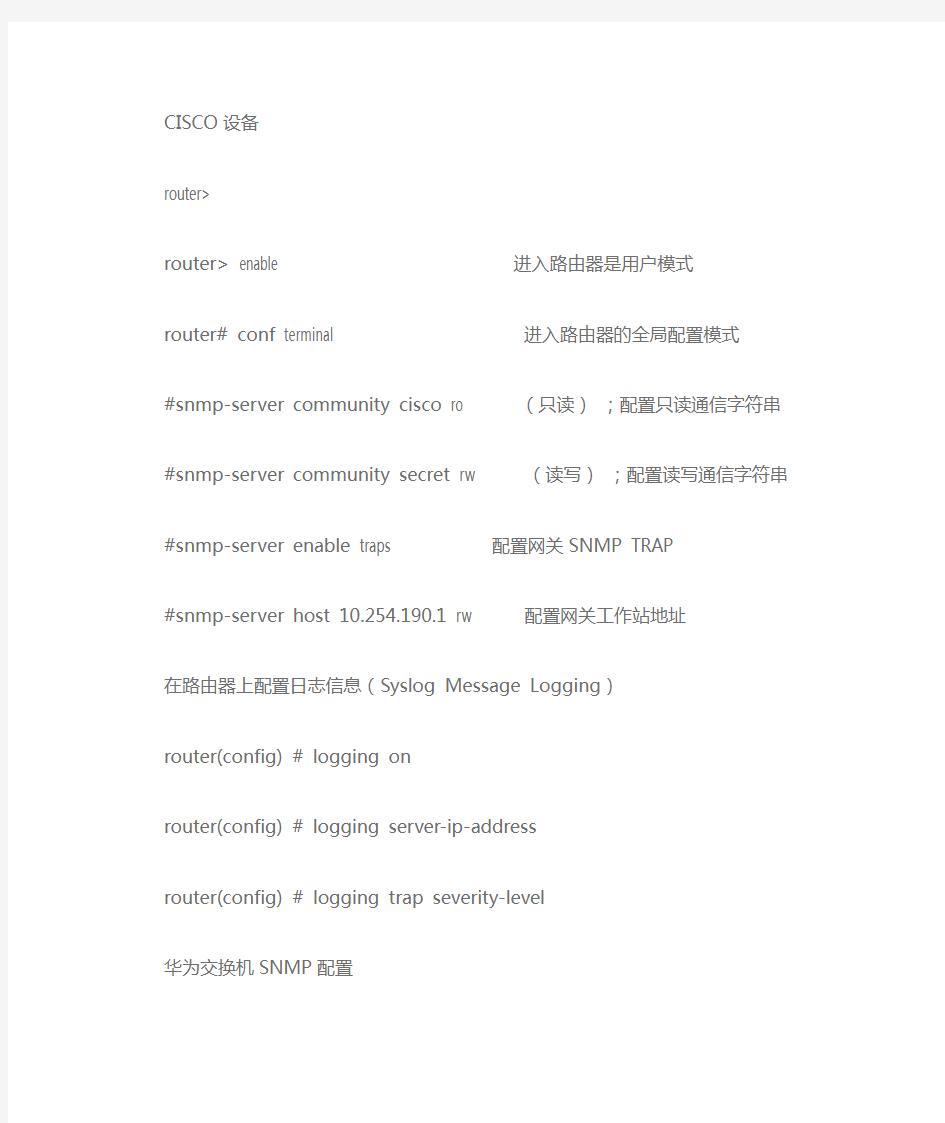在交换机上打开snmp


CISCO设备
router>
router> enable 进入路由器是用户模式
router# conf terminal 进入路由器的全局配置模式
#snmp-server community cisco ro (只读);配置只读通信字符串
#snmp-server community secret rw (读写);配置读写通信字符串
#snmp-server enable traps 配置网关SNMP TRAP
#snmp-server host 10.254.190.1 rw 配置网关工作站地址
在路由器上配置日志信息(Syslog Message Logging)
router(config) # logging on
router(config) # logging server-ip-address
router(config) # logging trap severity-level
华为交换机SNMP配置
[switch]snmp-agent community read huawei 配置community 只读属性为huawei [switch]snmp-agent community write huawei配置community 可写属性为huawei [switch]snmp-agent sys-info version all 配置版本为所有
Display curent
港湾交换机配置TELNET SNMP
启动SNMP服务的配置步骤如下:
配置步骤
步骤1 service snmp enable 使能SNMP agent服务
步骤2 service snmp trap enable 使能SNMP trap服务
步骤3 config snmp community readonly
步骤4 config snmp community readwrite
步骤5 config snmpauthentrap [enable|disable] 使用enable设置当SNMP认证失败时发送trap
步骤6 show service 显示SNMP是否启动
步骤7 show snmp community-string 显示当前的权限认证密码
配置SNMP trap
交换机上的SNMP agent会产生很多种类的trap信息,如启动(start)、接口(interface)、R MON(远程监控)等。可以在交换机上配置SNMP trap来指定一台或多台trap接收站(trap rece iver),并指定哪些种类的trap信息会发送到这些接收站。
配置步骤
步骤1 service snmp enable 使能SNMP agent服务
步骤2 service snmp trap enable 使能SNMP trap服务
步骤3 config snmp trap type [all|interface|bgp|ospf|vrrp|stp|rmon|start|auth|p ppoe|isis] [on|off] 配置发送trap的类型
步骤4 config snmp trapreceiver add
步骤5 config snmp trapreceiver add
步骤6 show snmp trap type 显示系统允许发送的trap种类
步骤7 Show snmp trapreceiver 显示已经添加的所有trap接收站
